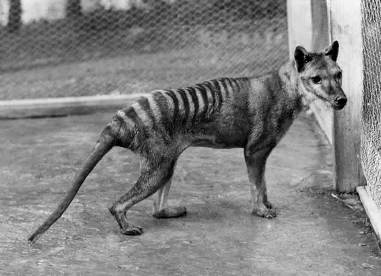
This picture would not exist if such people had their way.
There are several things wrong with that way of thinking. There are a few examples of animals being completely extinct in the wild but surviving quite well in private collections. I do not mean zoos; I mean ranches. Privately-owned ranches that serve no educational purpose whatsoever and are managed by people in Texas for kicks.

The Scimitar-Horned Oryx (Oryx dammah) is one such creature. As soon as you see one of these animals, those HUGE horns - around a meter and a quarter long for either sex - jump right out at you. As one of my friends put it, they could skewer "you and your 5 best friends." The Oryx prefer to turn 180 degrees and kill predators with them; close enough.

These antelopes were native to the African Sahara before being completely wiped out in the wild. They were excellent game animals that just so happened to resemble unicorns from a side-view. What, you don't want horns that can get over a meter long as a trophy?

Ya rly.
Scimitar Oryxes do, however, exist in Texas. Zoos have a few, but by and large, they live in Texas on hunting ranches. There are currently more Scimitar Oryx on these ranches than in zoos.
Wait. What? Why?! How does that work?
Look at it this way: On hunting ranches there necessarily needs to be a surplus. Your goal is to not only have a breeding herd of animals, but a breeding herd with a high fertility rate. That way, you can easily spare a few offspring.
Texas is also pretty close to the environment of the Sahara Desert. Barring the similarities in the natural environment, these were desert animals. Desert animals tend to be very easy to take care of. This is especially true if one lives in Texas, which is full of hot air and bad politics (plus no animal laws).
If the point that privately keeping exotic animals can be a very good thing still hasn't sunk in, consider the Tasmanian tiger/thylacine. The thylacine was also hunted, albeit for different reasons. This animal is now extinct not just in the wild, but in captivity as well.

Not an actual tiger.
Had, perhaps, someone taken in the thylacine onto a game reserve instead of outright eradicating it, we might still have them around. They would be game specimens, but they would still be around.
Scimitar-horned oryx: +2,145 as game specimens and another thousand or so in zoos. Tasmanian tiger: 0.
On that note...



No comments:
Post a Comment